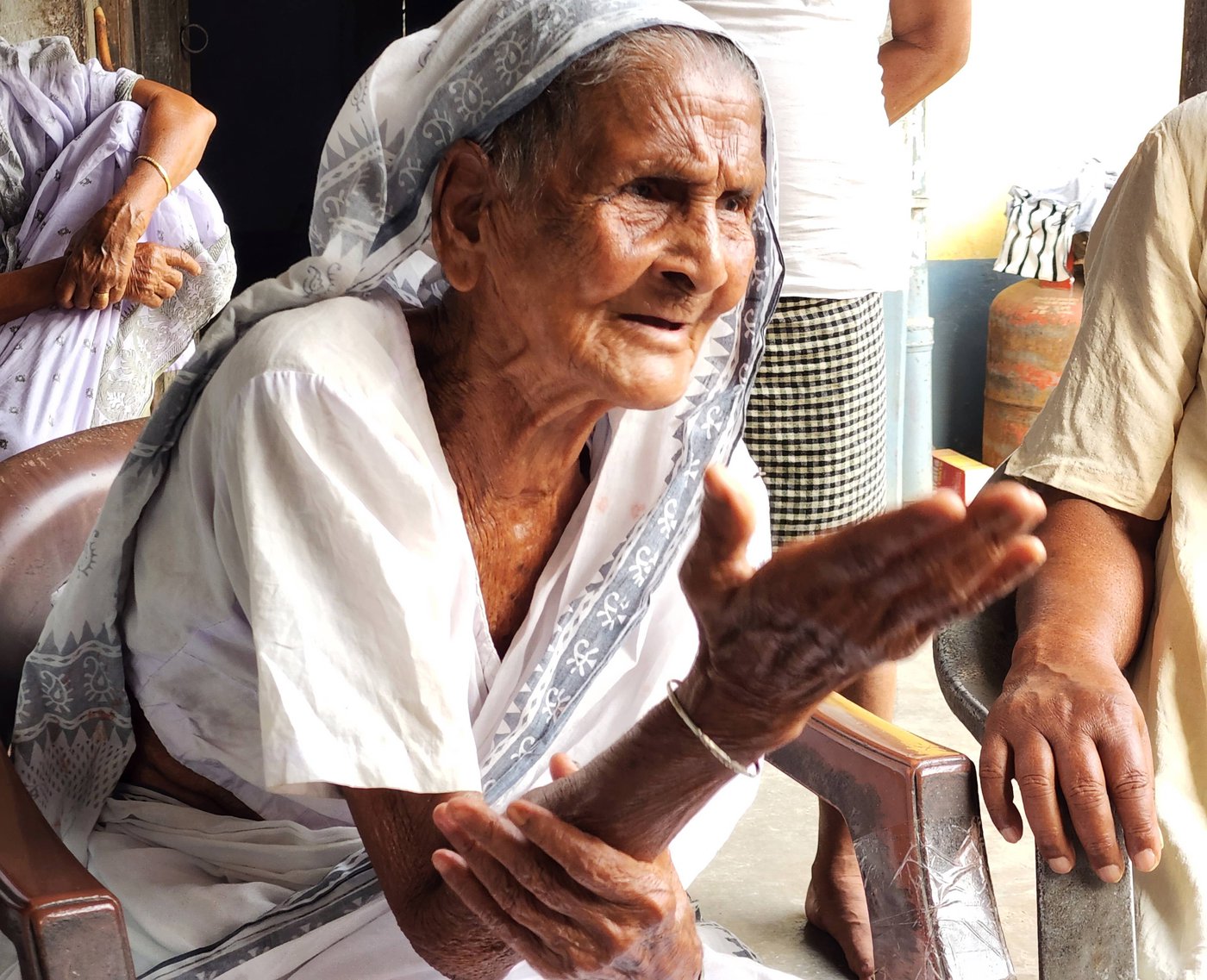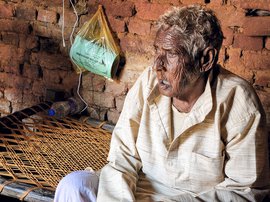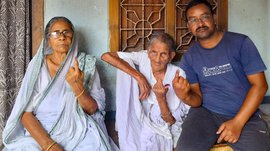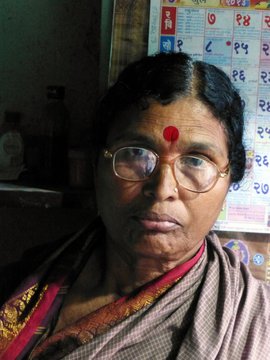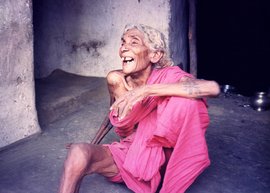“It must have been very hard for you when your husband Baidyanath was jailed for 13 months in the Quit India movement?” I ask Bhabani Mahato in Puruliya. “Running such a large joint family and…”
“It was much worse when he came back home,” she says calmly but firmly. “It meant he would keep bringing his friends,or I had to cook for them and they would pick up the food. Sometimes 5, 10, 20 or more people. I never had a moment’s rest.”
“But surely, your association with the Quit India stir…”
“What did I have to do with that, or anything like that?” she asks. “I had nothing to do with the struggle, my husband Baidyanath Mahato did. I was just too busy looking after a big family, all those people, how much cooking I had to do – every day the cooking increased!” says Bhabani. “Remember, I also ran the farm.”
We are crestfallen. The disappointment likely showing on our faces. We had come quite a distance to this remote part of West Bengal in search of still-living freedom fighters. And here was this great candidate for that role, in Chepua village of Manbazar I block, disavowing any connection with the historic struggle that brought India its Independence.
Bhabani Mahato speaks with great clarity and decisiveness for one who is anywhere between 101 and 104 years old. Documenting the age of poor people in remote rural regions is tricky at the best of times. A century ago, when she was born, it was mostly non-existent. But we do arrive at that estimate of Bhabani’s age. Via her late husband’s records, and from members of her large family including a son in his 70s. And from her slightly younger contemporaries in the few villages we are visiting in Puruliya (also spelt as Purulia).
This is at any rate, a more reliable reckoning than the arbitrary ages handed out to people of her generation by the dysfunctional Aadhaar card system here. There, Bhabani has been assigned a birth year of 1925. That would make her 97.
Her family says she is 104 years old.
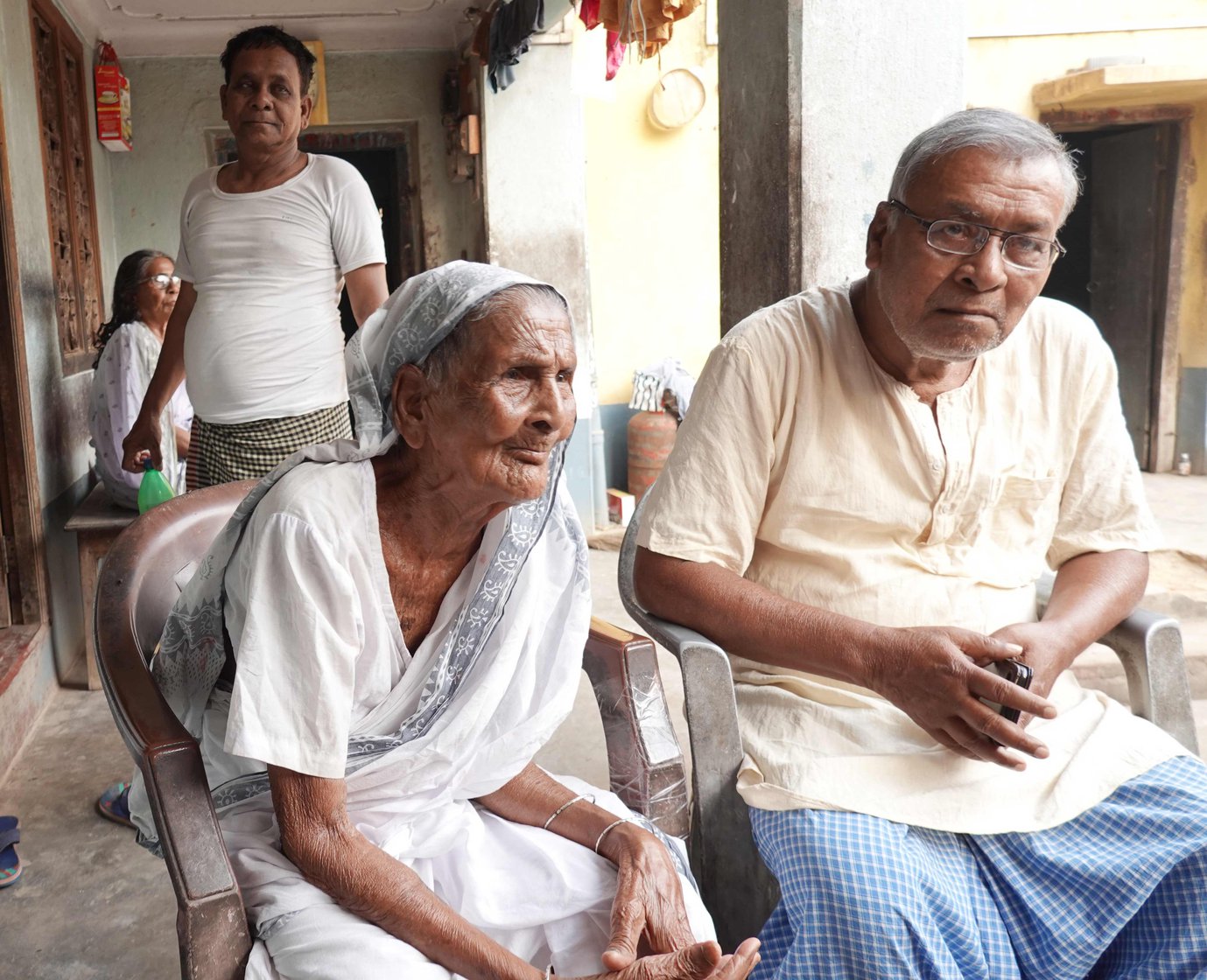
Bhabani’s age is somewhere between 101 and 104. Here she is with her son Shyam Sundar Mahato who is in his 70s
“We had a large joint family,” she says. “All responsibilities were mine. I did all the chores. I took care of everything. Everything. I ran the family. I looked after everybody in 1942-43 when all those incidents happened.” Bhabani does not name the ‘incidents’. But they included, among others, the Quit India stir. And the famous September 30, 1942 attempt by freedom fighters to hoist the tricolour at 12 police stations in what was even then one of the most deprived regions of Bengal.
A district in which, even today, a third of all families live below the poverty line. And which still reports the highest levels of poverty in West Bengal. Bhabani’s huge family held – and still does – some acres of land. That made them relatively better off than several others.
Her husband Baidyanath Mahato was a local leader. He was actively involved in anti-British Raj actions. As two still-living freedom fighters in Puruliya, Thelu Mahato and ‘Lokhi’ Mahato, tell us in Pirra village, it took a long time for news of any sort to reach the remote regions. “Here, we got to know of the Quit India call maybe a month after it was made,” says Thelu Mahato.
And so the action planned in response happened on September 30, 1942. Fully 53 days after Mahatma Gandhi’s call for the British to ‘Quit India’ at the Gowalia Tank Maidan in Mumbai on August 8, 1942. Baidyanath was arrested in the crackdown and suffered in the repression that followed. He was to become a schoolteacher after Independence. Teachers back then played a key role in political mobilisation. A role that would be carried over into Independent India for some decades.
*****
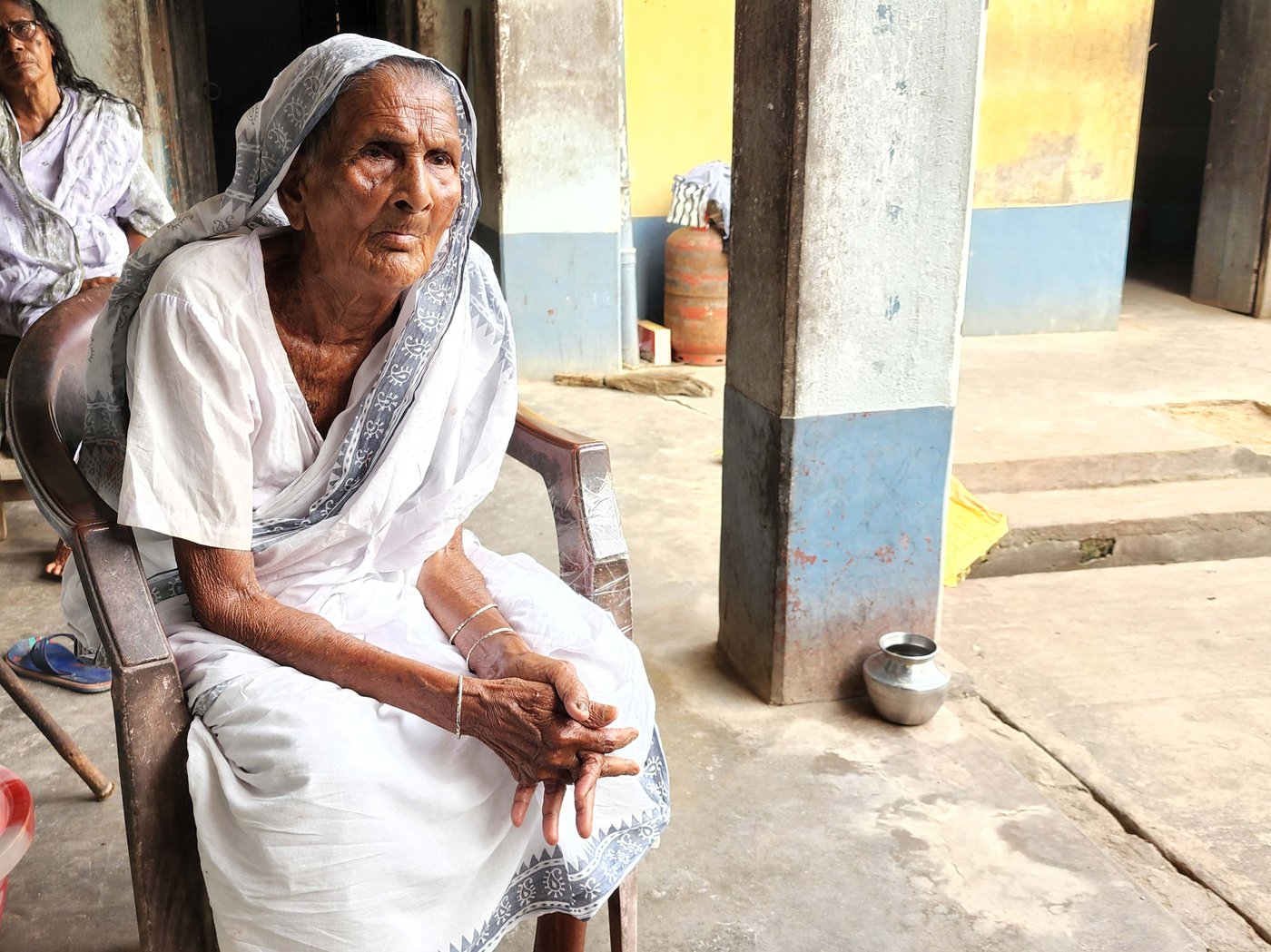
Bhabani ran the family’s farm for decades right from preparing the soil for sowing, to supervising the labour and the harvesting. She even transported the produce back home herself
There were various forces involved in the attempt to occupy the police stations and hoist the flag on them. There was a public just fed up with exploitative British rule. There were others from diverse backgrounds. There were leftist revolutionaries and Gandhians. And even people like Thelu and Lokhi Mahato who we realised were, like so many others, leftist by persuasion and Gandhian by personality.
Their politics, their passion, was with the Left. Their moral codes and lifestyle were guided by Gandhi. They were often torn between these two paths. They believed in ahimsa but at times retaliated against the British in violence. They say: “Look, they opened fire on us. Of course people would retaliate when they saw their friends, family or comrades shot by police before their eyes.” Both Thelu and ‘Lokhi’ are Kurmis.
Bhabani’s family are also Kurmis, the largest community in the Janagalmahal region of West Bengal.
The British Raj listed them as a Scheduled Tribe in 1913. It however dropped them from that group in the 1931 Census. In India of 1950, they were, oddly, listed as OBC. Restoration of their tribal status remains a major demand of the Kurmis in this state.
Kurmis were also at the forefront of the freedom struggle here. Scores of them took part in the march on the 12 police stations in the last two days of September 1942.
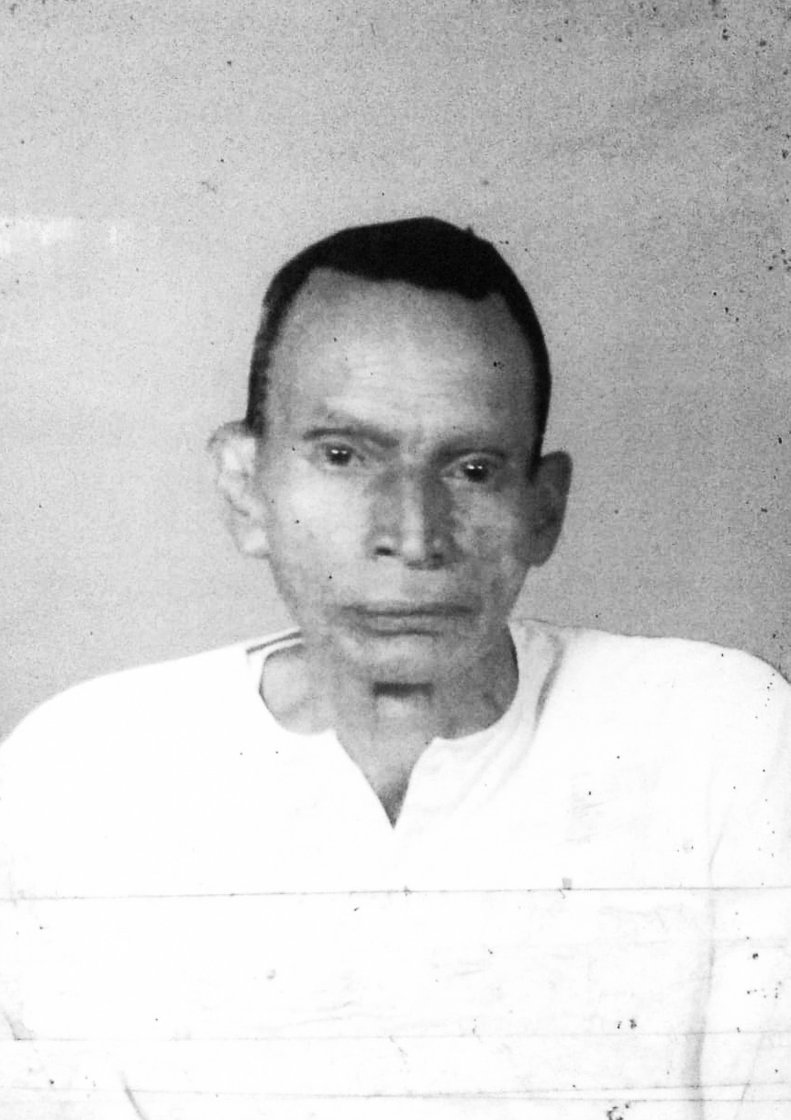
Baidyanath Mahato was jailed 13 months for his role in the Quit India stir
“Baidyanath spent the next 13 months in jail,” says his son Shyam Sundar Mahato, in his 70s. “He was held in the Bhagalpur Camp Jail.” Which was when we asked Bhabani that question about his incarceration being hard on her. And got her startling reply about its being much worse when he came back home.
“It meant more people coming. More folk to be fed. More people to be looked after. I cried a lot when he came back and expressed my anger that all his great heroism was happening at my expense, at the cost of his family. And with his return, my work went up.”
We refocus our attention on Bhabani. Did Gandhi have an impact on her thinking? How did she feel about satyagraha and ahimsa ?
Calm though she is, Bhabani is both expressive and articulate. She gives us a gentle look that somehow conveys the impression that she is explaining herself to dim-witted children who simply do not get it.
“Gandhi…what do you mean?” she asks. “What do you mean? Do you think I was going to sit and think about that and ponder these issues? Every day the number of people were growing whom I had to cater to, serve, look after, cook for,” she says, waving an arm at us for emphasis.
“Please understand, I was nine years old when I was married. Where was I thinking about such great matters then? After that I was single-handedly looking after a huge joint family for decades. Please know that I ran the farm. From preparing the soil, to sowing, to supervising the munish [labour], weeding, to harvesting…” She then provided cooked food to the farm labourers.
She also transported the produce back to her home from fields that were quite on the edge of the forests.
And did all that in an era where she had no mechanical devices – electric ones were unheard of at that time. And all the physical labour she did in the fields was with incredibly old tools and implements that were – and still are – designed for larger, male hands. This, in a highly drought-prone region swamped in inequality and hunger.
Some three decades after her wedding to Baidyanath, he married again. This time he wed Bhabani’s own sister, Urmila, younger to her by almost 20 years. An event their relatives say was brought on by a major family crisis. Each sister bore three children.
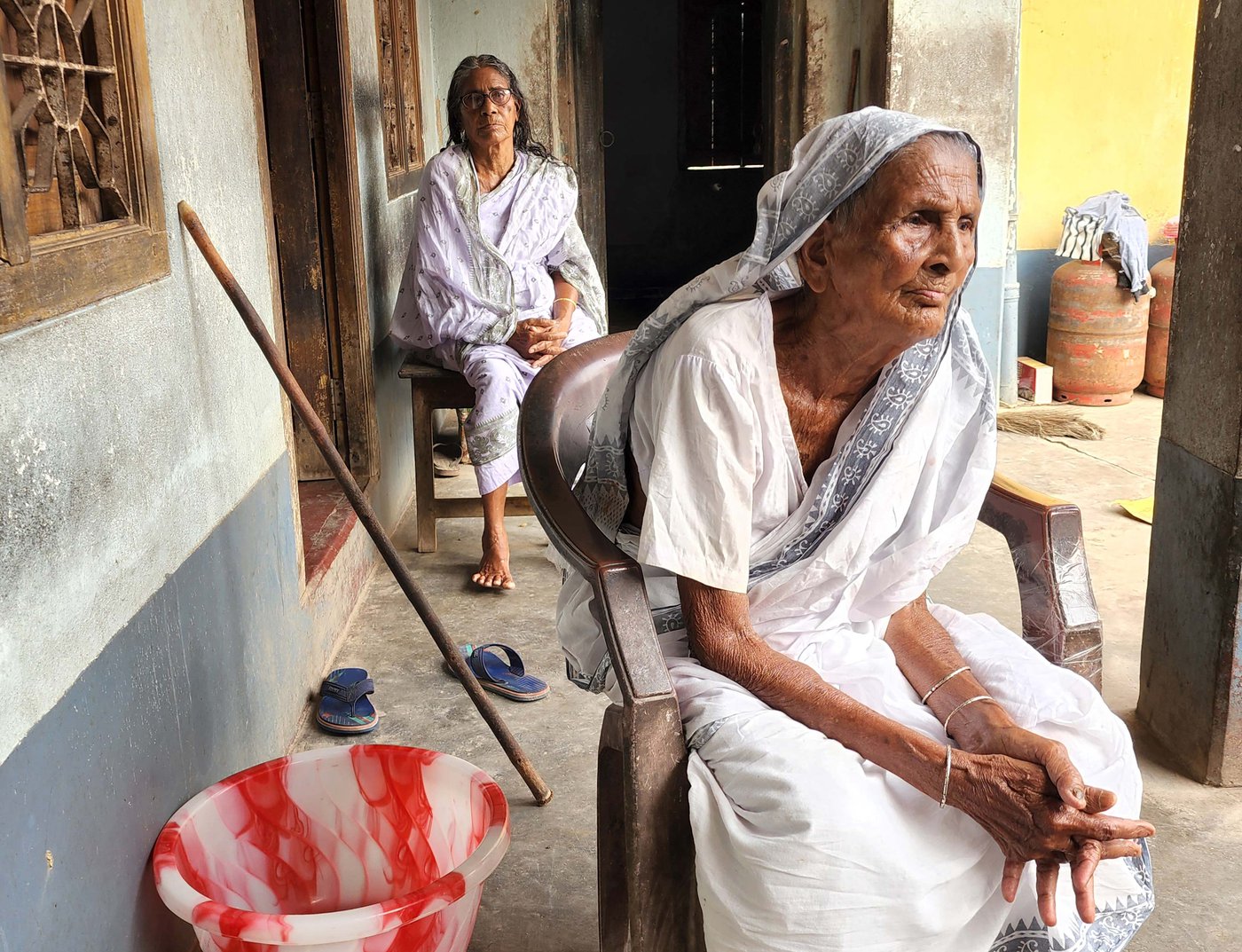
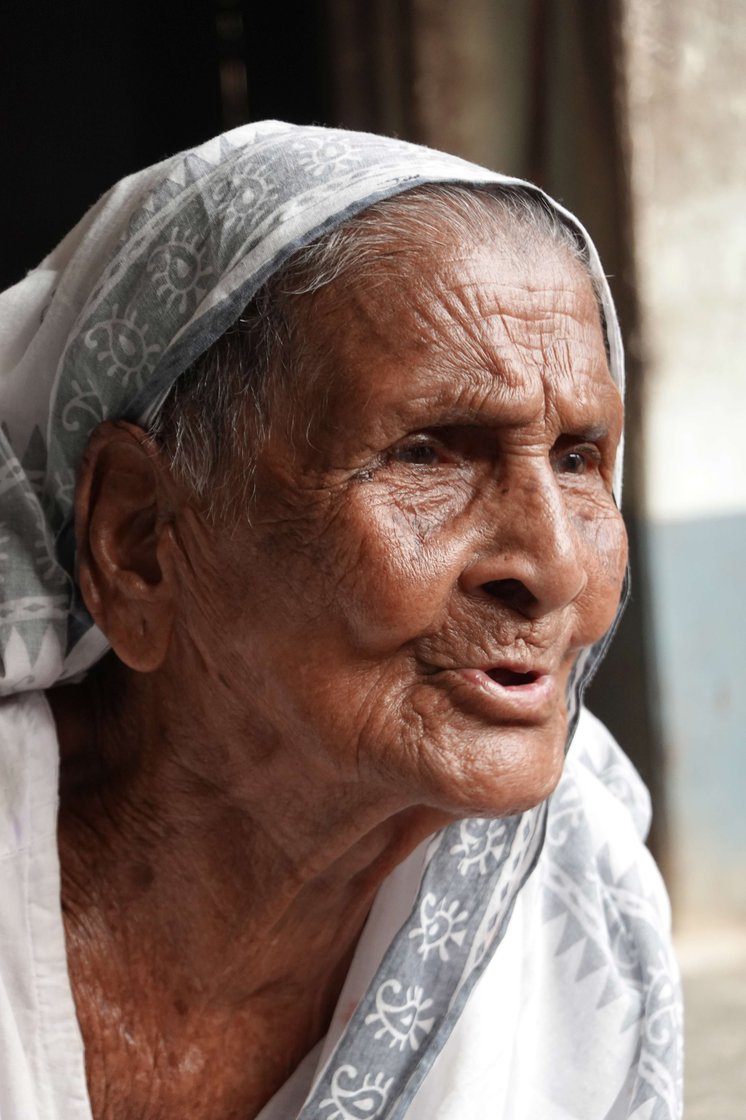
Bhabani at her home in Chepua village of Puruliya district
It slowly sinks in. Bhabani Mahato grew, harvested, and transported the food that she then cooked for her family – and for many others. She was doing that through the late 1920s and the 1930s. And through the 1940s as well.
Details of how many acres she worked on are a bit hazy. The family cultivated land which they saw as their own but held no title deeds for it. They worked on it at the pleasure of the
zamindar
. Her huge household with over 20 members lived off land held by both Bhabani’s own family in Janra and in her marital home in Chepua. In both villages that totalled nearly 30 acres.
The brutal burden of work falling on her consumed every waking hour. And those were many.
So was she up by 4 a.m.? “Long before that,” she scoffs, “long before that.” It seems like she was up latest by 2 a.m. “And I never once got to sleep before 10 in the night. Usually, a lot later.”
Her first child died after a bad bout of dysentery. “We went to a healer, a fakir called Kaviraj. But it did not help. She was just one year old when she died.”
I try asking her again about Gandhi and the movement. “After I became a mother,” she says, “I could not find the time to run the charkha and all those kinds of things which I was doing.” She reminds us once again – “I was nine when I got married.”
But thereafter, given the times she lived in, the troubles she pulled through, surely Bhabani can talk to us of three overwhelming experiences she encountered in that era?
“I was overwhelmed every moment. Please understand what my life was like. What do you think I was going to sit and think about? I was looking at how to manage, how to run this huge household. Baidyanath and others were involved in the struggle. I fed everybody.”
What did she do when the bruising load and stifling pressure got to her? “I sat with my mother and cried there. Mind you, when I had to cook for more and more people that Baidyanath brought with him – I was not irritated. I just felt like crying.”
She repeats those words, wanting us to understand her well – “I was not irritated, I just felt like crying.”
*****
In the 1940s, her load was heaviest during the years of the Great Bengal Famine. The hardships she must have endured in that period defy the imagination
And just as we’re rising from our chairs to leave, her grandson Partha Sarathi Mahato who is – like Baidyanath was – a teacher, asks us to remain seated. ‘Partha da’ has just a few words to say to us.
And the penny drops.
Who were those people she kept cooking for other than her large family? Who were the sometimes five-ten-twenty people whom Baidyanath kept getting her to prepare meals for?
“Those meals she cooked were for the revolutionaries,” says Partha da. “Those in the underground resistance, often on the run or hiding in the forest.”
We sat there in silence some moments. Completely overwhelmed by the sheer sacrifice of this woman who never had a moment to herself, for herself, in almost her entire life from age nine.
If what she did in the 1930s and ’40s wasn’t participation in the freedom struggle, what was?
Her son and others look at us, surprised that we had not understood this. They had taken it for granted that we knew.
Did Bhabani know what she was doing and for whom?
Well, actually, yes. She just did not know their names or recognise them as individuals. Baidyanath and his fellow rebels organised the transfer of food cooked by the village women to those on the run, in a way aimed at protecting both as best they could.
Partha da, who has researched the situation in Puruliya of that time, would explain to us later: “Only a few better-off families in the village were to prepare meals for however many activists in hiding there were on a given day. And the women doing this were asked to leave the cooked food in their kitchen.
“They did not know who it was who came and picked up the food, nor who the individuals were they were cooking for. The resistance never used people from the village to do the transportation. The British had spies and informants in the village. So did the feudal
zamindars
who were their collaborators. These informants would recognise locals carrying loads to the forest. That would endanger both the women and the underground. Nor could they have anyone identifying the people they sent in – probably by nightfall – to collect the food. The women never saw who it was lifting the meals.
“That way, both were shielded from exposure. But the women knew what was going on. Most village women would gather each morning at the ponds and streams, tanks – and those involved exchanged notes and experiences. They knew why and what they were doing it for – but never specifically for whom.”
*****
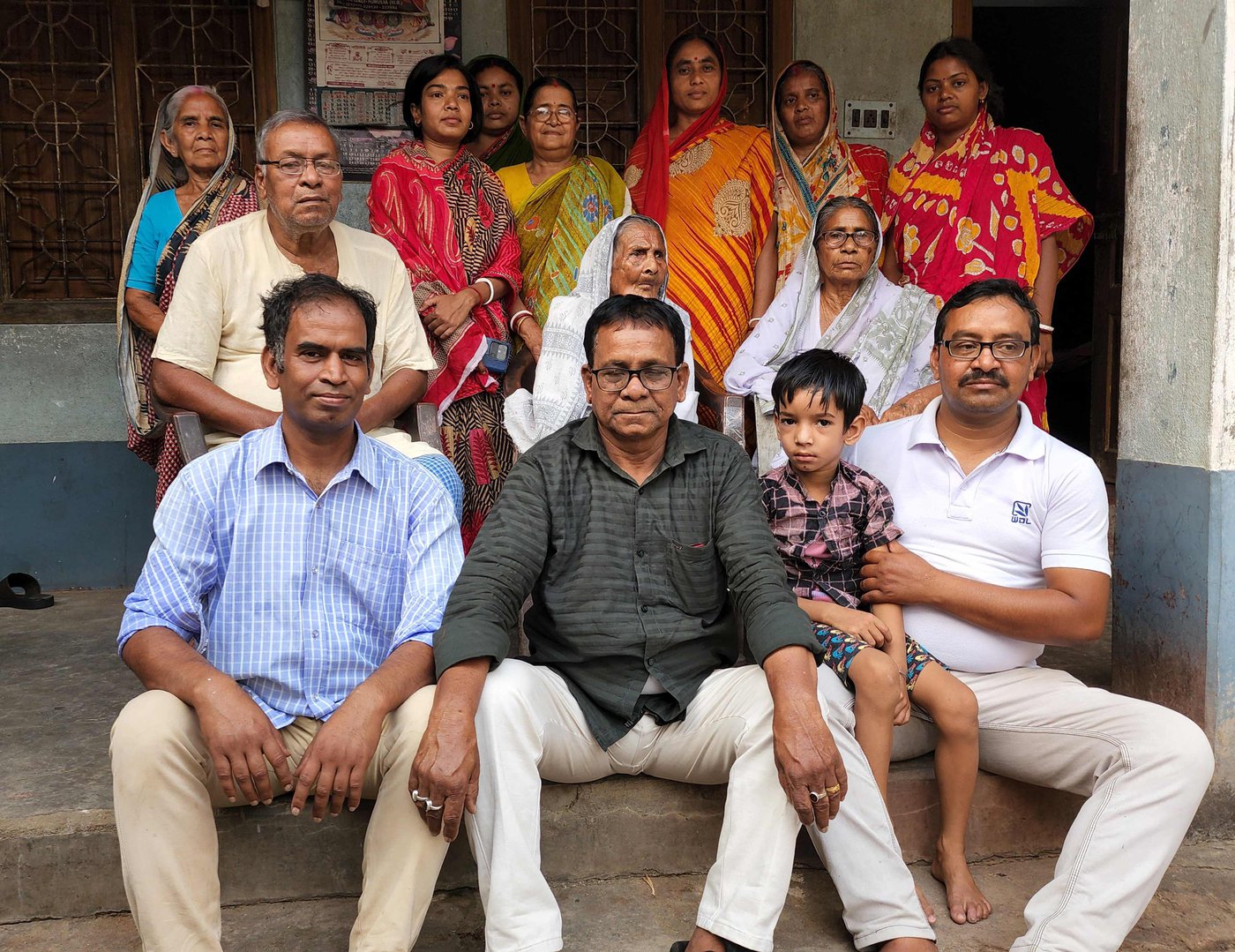
Bhabani with 13 other members of her present household, including (bottom right) her grandson Partha Sarathi Mahato. Some family members were not present when the photo was taken
The ‘women’ included young girls barely in their teens. All of them risking very serious consequences. What if the police landed up at Bhabani’s house? What would become of her and the family that depended on her, as she points out, for ‘everything’? Largely, though, the underground protocols worked.
Yet, families embracing swadeshi , charkha , and other symbols of resistance to the British were always under surveillance. The dangers were real.
So what did Bhabani cook for those in hiding? She has Partha da explain it to us after our meeting. Jonar (maize), kodo (ditch millet or Indian Cow Grass), madwa ( ragi or finger millet), and any vegetables the women could get. Which means, thanks to Bhabani and her friends, they could often consume the same staples they had at home.
On some occasions, they had puffed or flattened rice – chinre ( poha ) in Bengali. The women sometimes also sent them fruit. Besides which they would eat wild fruit and berries. One item the old-timers recall is kyand (or tiril ). In more than one tribal language, that simply means fruit of the forest.
Partha da says his grandad as a young husband would suddenly show up and place orders with Bhabani. When this was for friends in the forest, it inevitably meant preparing food for many more people.
And it wasn’t just the British who were a problem. In the 1940s, her load was heaviest during the years of the Great Bengal Famine. The hardships she must have endured in that period defy the imagination.
Her adventures continued after Independence. In the 1950s, a huge fire razed the entire mohallah where the family still lives. It destroyed all stocks of grain held by people there. Bhabani brought in grain and produce from her own family’s lands in the village of Janra. And sustained the entire community for weeks till the next harvest.
In 1964, a major communal flare-up rocked nearby Jamshedpur in what was then Bihar. Its flames scorched some villages in Puruliya as well. Bhabani sheltered many Muslims of her village in her own house.
Two decades later, an already aging Bhabani killed a wild cat that was raiding the livestock of the locals. She did that, says Partha da, with a stout piece of wood. It turned out to be a khatas , or Small Indian Civet, coming out of the forest.
*****
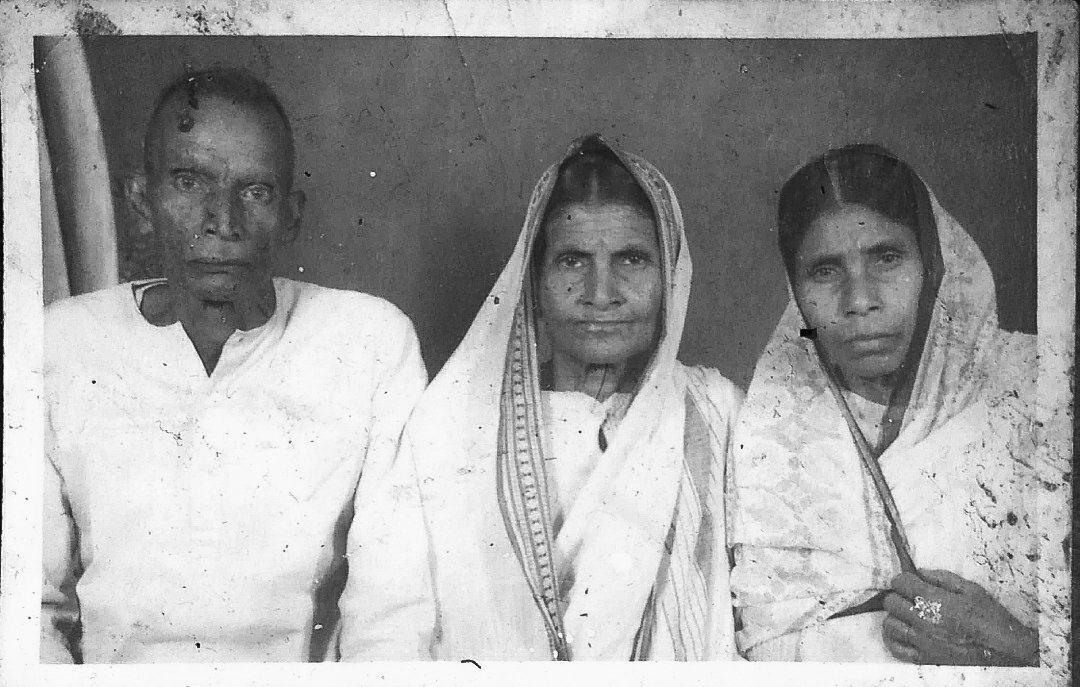
Bhabani Mahato (centre) with her husband Baidyanath and sister Urmila in the 1980s. There are no family pictures from the earlier periods
We look at Bhabani Mahato with renewed respect. I remembered the story I had done on freedom fighter
Ganpati Yadav
. A courier of the underground in Satara, he carried food into the forests for the fighters hiding out there. He was still cycling 20 kilometres a day at 98 when I met him. I loved doing that story on the wonderful man. But had failed to ask him: he carried so much food into the forests at great risk, but what about his wife who did the cooking?
She was away with relatives when I visited him.
Ganpati has passed, but our encounter with Bhabani makes me realise one thing: I need to go back and speak to Vatsala Ganpati Yadav. And have her tell her own story.
Bhabani also makes me recall those powerful words of Laxmi Panda, the Odia freedom fighter who had joined Netaji Bose’s Indian National Army and had been in their camps, both in the forests of Burma (now Myanmar), and in Singapore.
“Because I never went to jail, because I trained with a rifle but never fired a bullet at anyone, does that mean I am not a freedom fighter? I only worked in INA forest camps that were targets of British bombing. Does that mean I made no contribution to the freedom struggle? At 13, I was cooking in the camp kitchens for all those who were going out and fighting, was I not part of that?”
Bhabani, like Laxmi Panda, Salihan, Hausabai Patil and Vatsala Yadav, never received the honours and recognition she truly deserved. In the struggle for India’s freedom, all of them fought and acquitted themselves as honourably as anyone else. But they were women. In societies awash in prejudices and stereotypes against women, their role was seldom valued.
This doesn’t seem to bother Bhabani Mahato, though. Perhaps she has internalised those values? Perhaps it leads her to undervalue her own unique contribution?
But the last thing she tells us as we leave is this: “Look at what I nurtured. This large family, all these generations, our farm, everything. But these younger people….” Several granddaughters-in-law seem to be working around us with the greatest diligence. They are obviously doing their best. Yet, it’s what she did single-handedly in her time.
She isn’t blaming them or anyone else, really. She just regrets there are fewer people who can do – ‘everything’.
My thanks and gratitude to Smita Khator for her major inputs into this story and for providing flawless simultaneous translation for Bhabani Mahato as she spoke. Also, my thanks to Joshua Bodhinetra for his invaluable inputs and for the recce trip that actually set up the meetings and interviews we did. Without Smita and Joshua, this story would not have happened.
